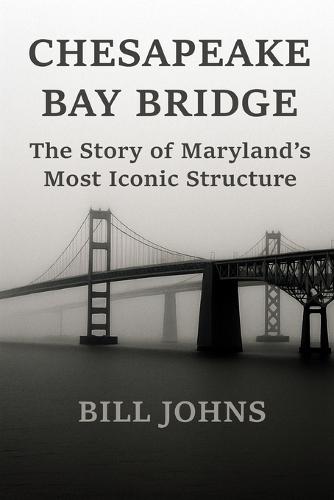Overview
The Chesapeake Bay Bridge is more than a marvel of engineering-it is a rite of passage, a source of fear, a lifeline to the Eastern Shore, and a symbol of Maryland identity. Whether you've crossed it on your way to Ocean City, waited in traffic as the sun set over the water, or gripped the wheel in white-knuckled silence, the Bay Bridge lives in your memory. This book is about that memory-and the bridge that shaped it. Chesapeake Bay Bridge: The Story of Maryland's Most Iconic Structure is a sweeping cultural and historical narrative of one of America's most storied crossings. Blending structural engineering with oral history, regional folklore, and the politics of infrastructure, the book traces the bridge's evolution from long-abandoned 19th-century proposals through its fraught 20th-century construction, up to the present-day debates about its future. It captures not only the massive effort of building a bridge across one of the widest estuaries in North America, but also the human toll, ambition, resistance, and imagination that made such a project possible. The book opens with a deeply personal preface, Bridge in the Bloodline, reflecting on the author's own connection to the span through his father, a structural engineer who helped construct the pilings at the bridge's eastern edge. From there, the narrative expands to tell the stories of the communities it connected and disrupted-fishing villages that became suburbs, summer cottages that became commuter enclaves, and the farmers, sailors, watermen, and working-class families whose fates were transformed by the rise of four concrete lanes across the Bay. Through vivid, atmospheric chapters, Chesapeake Bay Bridge recounts the bridge's precarious wartime origins, its postwar triumphalism, and the social changes it carried across the water. It includes the little-known stories of toll collectors, maintenance workers, inspectors, and bridge police; it investigates the deep-seated fear of crossing high bridges (gephyrophobia) and the emergence of professional bridge-driving services; and it documents the heroism of rescue workers who have saved lives on the span during moments of crisis. Alongside the structural history lies a parallel narrative of imagination-how the bridge lives in local legend, urban planning battles, environmental anxiety, and the memories of those who see it not only as infrastructure but as inheritance. For readers interested in Chesapeake Bay history, Maryland heritage, civil engineering, maritime culture, or American infrastructure, this book offers an unforgettable journey into a bridge that means more than concrete and cable. It is a place of memory, myth, passage, and identity. Drawing on historical archives, technical records, and lived experience, this is the definitive story of the bridge that changed Maryland. Whether you are a lifelong resident of the Eastern Shore, a beachgoer from Washington or Philadelphia, a structural engineer, or someone who has only crossed it once with your breath held tight, this book will speak to what it means to live with-and under-the shadow of something vast, human-made, and unforgettable. Come stand at the rail. Remember the first time you crossed. And ask what it means to inherit a bridge.
Full Product Details
Author: Bill Johns
Publisher: Independently Published
Imprint: Independently Published
Dimensions:
Width: 15.20cm
, Height: 2.10cm
, Length: 22.90cm
Weight: 0.531kg
ISBN: 9798287130879
Pages: 400
Publication Date: 06 June 2025
Audience:
General/trade
,
General
Format: Paperback
Publisher's Status: Active
Availability: Available To Order

We have confirmation that this item is in stock with the supplier. It will be ordered in for you and dispatched immediately.



